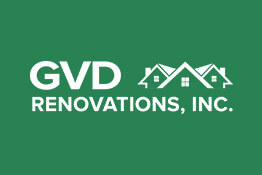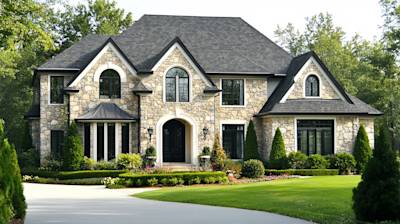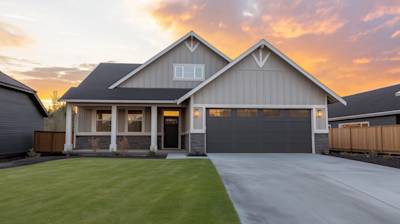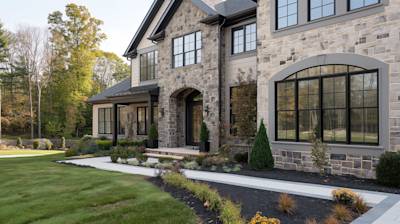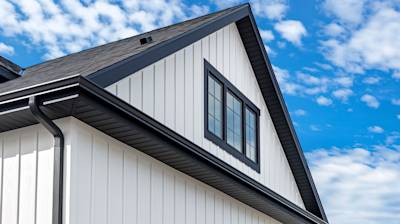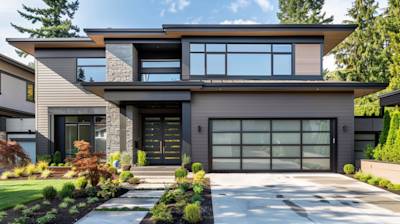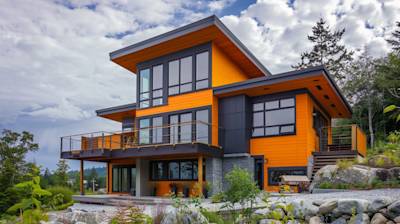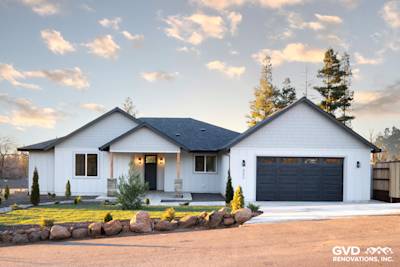As a homeowner, you want to ensure that your property's exterior looks good and stays protected from the elements. The siding is an important component of your home's exterior that enhances its curb appeal and provides insulation. While there are different types of siding materials available in the market, one material that was popular in the 80s and 90s was hardboard siding, also known as Masonite. In this article, we will explore what hardboard siding is, why it was so popular, and why it fails.
What is Hardboard Siding?
Hardboard siding is a composite material made from wood fibers, resins, and wax. The wood fibers are typically derived from waste wood, such as sawdust or wood chips, that is compressed under high pressure to form hardboard siding panels. The resins and wax are added to the wood fibers to create a durable and water-resistant material.
Hardboard siding was created as an alternative to traditional wood siding, which required frequent maintenance and was vulnerable to rot and insect damage. Hardboard siding was introduced in the 1980s and quickly gained popularity due to its low cost, ease of installation, and versatility. It could be cut, painted, and shaped to look like real wood, and it came in a variety of textures and finishes.
Masonite Siding
Masonite is one of the most well-known brands of hardboard siding. It was created in the early 1920s by William H. Mason, who was looking for a way to use wood waste from his sawmill. He developed a process for making hardboard by pressing wood fibers under high temperature and pressure. The resulting material was strong, smooth, and easy to work with, and it quickly became popular for a variety of applications, including siding.
Masonite hardboard siding is known for its durability, versatility, and affordability. It can be cut, drilled, and painted just like real wood, and it is available in a variety of finishes and textures. Masonite hardboard siding is also resistant to moisture and insect damage, which makes it an attractive option for homeowners.
Why Was Hardboard Siding So Popular?
As mentioned earlier, hardboard siding was an attractive option for homeowners and builders due to its low cost and easy installation. It could be installed quickly, with no need for specialized tools or equipment. Hardboard siding was also considered a sustainable choice, as it was made from recycled wood fibers and could be recycled at the end of its lifespan. Its versatility in terms of texture and finishes meant that it could be made to look like other types of siding materials, including wood, stucco, and brick.
Why Does Hardboard Siding Fail?
Despite its popularity, hardboard siding has several drawbacks that have contributed to its decline in recent years. One of the main issues with hardboard siding is its susceptibility to moisture damage. When exposed to water, hardboard siding can swell, warp, and delaminate. This can lead to cracking, peeling, and ultimately, rot. If left untreated, moisture damage can compromise the structural integrity of the siding and cause it to fail.
Another issue with hardboard siding is its tendency to attract insects, especially termites. Hardboard siding is made from wood fibers, which are a food source for termites. If the siding is not properly sealed and painted, termites can quickly infest it and cause irreparable damage.
Furthermore, hardboard siding may fail due to improper installation. If the siding is not properly sealed, water can penetrate the joints and seams, causing moisture damage. Additionally, if the siding is not properly fastened to the wall, it can become loose and vulnerable to wind damage.
Replacing Hardboard Siding
If you have hardboard siding on your home, it is important to monitor it for signs of damage and address any issues promptly. Depending on the extent of the damage, you may need to repair or replace the siding.
Repairing hardboard siding can be a temporary fix, but if the damage is extensive, replacing the siding may be the better option. When replacing hardboard siding, you can choose from a variety of materials, including fiber cement, vinyl, and wood. These materials offer better durability, insulation, and resistance to moisture and insect damage than hardboard siding.
Fiber cement siding is a popular choice among homeowners and builders due to its durability and low maintenance requirements. It is made from a mixture of cement, sand, and cellulose fibers, which makes it resistant to moisture, fire, and pests. Additionally, fiber cement siding can be painted or stained to match the look of wood, stucco, or other siding materials. This means you can have the look of wood or other materials without the drawbacks of those materials. This makes it an attractive option for many homeowners.
Vinyl siding is another option that is low cost, low maintenance, and resistant to moisture and insects. Vinyl siding is available in a variety of colors and styles and is easy to install. However, it is not as durable as fiber cement or wood siding and can crack or fade over time. Vinyl siding can also be prone to warping and melting if exposed to extreme temperatures.
Wood siding is a traditional option that offers a natural look and feel. It is available in a variety of species and finishes, and it can be stained or painted to match the style of your home. However, wood siding requires regular maintenance, including painting or staining every few years, to prevent moisture damage and insect infestations.
Conclusion
Hardboard siding, also known as Masonite, was a popular siding material in the 80s and 90s due to its low cost, ease of installation, and versatility. However, its susceptibility to moisture and insect damage, as well as improper installation, have contributed to its decline in recent years. If you have hardboard siding on your home, it is important to monitor it for signs of damage and address any issues promptly.
At GVD Renovations & Remodeling, we understand the importance of choosing the right siding material for your home. We provide exterior siding replacement and window installation services to homeowners in Sacramento and the Bay Area. Our team of experts can help you choose the best siding material for your home and install it with precision and care. Contact us today to schedule a consultation and learn more about our services. With our help, you can protect your home's exterior and enhance its curb appeal for years to come.
Tags: hardboard siding, Masonite, siding replacement, exterior siding,


